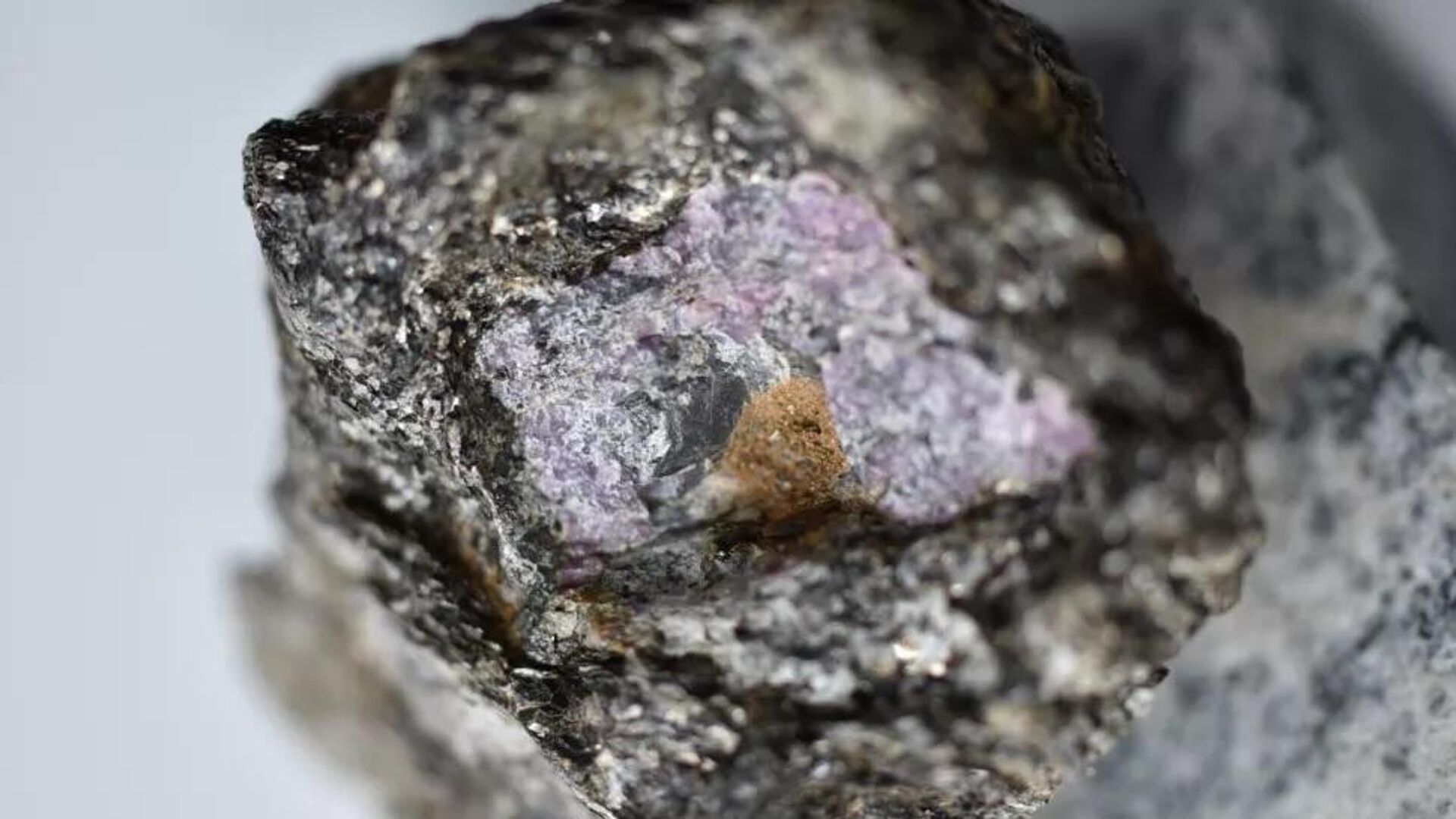https://sputnikglobe.com/20211025/traces-of-ancient-life-found-in-25-billion-year-old-ruby-for-the-first-time-1090186054.html
Traces of 'Ancient Life' Found in 2.5 Billion-Year-Old Ruby for the First Time
Traces of 'Ancient Life' Found in 2.5 Billion-Year-Old Ruby for the First Time
Sputnik International
Per scientists, rubies are formed under extreme heat and pressure at Earth's tectonic boundaries. The presence of the rare element chromium gives the gemstone... 25.10.2021, Sputnik International
2021-10-25T10:53+0000
2021-10-25T10:53+0000
2023-04-21T10:42+0000
carbon
gemstone
life
earth
science & tech
https://cdn1.img.sputnikglobe.com/img/07e5/0a/19/1090188264_0:0:970:546_1920x0_80_0_0_83c416861b954f48f24d5a5322b8bd29.jpg
Scientists from the University of Waterloo have found residue of graphite, a pure carbon form, inside a 2.5 billion-year-old ruby from Greenland. According to the geologists, this is the first time traces of "ancient life" have been discovered in a gemstone. Per the researchers, the presence of graphite also provides hints about how rubies are formed in a particular location as it is impossible to find out on the basis of a ruby's colour and chemical composition. These sparkling red gemstones are made up of a transparent red mineral called corundum. Interestingly, some of the oldest rubies on Earth are found in Greenland. Cyanobacteria are believed to be some of the first life on Earth and according to the researchers when this dead microbe was alive, the planet did not have much oxygen. In these extreme circumstances, only algae and microbes could thrive. Earlier studies suggested that after converting sunlight into chemical energy for billions of years, cyanobacteria were gradually able to produce oxygen and eventually evolve. The scientists have reported their findings in a study published in the November issue of the journal Ore Geology Reviews.
https://sputnikglobe.com/20210706/ancient-diamonds-reveal-earth-was-ready-to-sustain-life-at-least-27-billion-years-ago-study-says-1083316161.html
earth
Sputnik International
feedback@sputniknews.com
+74956456601
MIA „Rosiya Segodnya“
2021
Sushmita Panda
https://cdn1.img.sputnikglobe.com/img/07e5/05/12/1082926186_0:0:2048:2048_100x100_80_0_0_4474d0d7e27a36878eb8727832be74b4.jpg
Sushmita Panda
https://cdn1.img.sputnikglobe.com/img/07e5/05/12/1082926186_0:0:2048:2048_100x100_80_0_0_4474d0d7e27a36878eb8727832be74b4.jpg
News
en_EN
Sputnik International
feedback@sputniknews.com
+74956456601
MIA „Rosiya Segodnya“
Sputnik International
feedback@sputniknews.com
+74956456601
MIA „Rosiya Segodnya“
Sushmita Panda
https://cdn1.img.sputnikglobe.com/img/07e5/05/12/1082926186_0:0:2048:2048_100x100_80_0_0_4474d0d7e27a36878eb8727832be74b4.jpg
carbon, gemstone, life, earth, science & tech
carbon, gemstone, life, earth, science & tech
Traces of 'Ancient Life' Found in 2.5 Billion-Year-Old Ruby for the First Time
10:53 GMT 25.10.2021 (Updated: 10:42 GMT 21.04.2023) Per scientists, rubies are formed under extreme heat and pressure at Earth's tectonic boundaries. The presence of the rare element chromium gives the gemstone its deep hue and its quantity determines the redness of the ruby. The said scientists were studying the formation process for these gemstones when they found traces of "life".
Scientists from the University of Waterloo have found residue of graphite, a pure
carbon form, inside a 2.5 billion-year-old ruby from Greenland.
According to the geologists, this is the first time traces of "ancient life" have been discovered in a gemstone.
"The graphite inside this ruby is really unique. It's the first time we've seen evidence of ancient life in ruby-bearing rocks", said geologist Chris Yakymchuk of the University of Waterloo in Canada and the lead author of the study.
Per the researchers, the presence of graphite also provides hints about how rubies are formed in a particular location as it is impossible to find out on the basis of a ruby's colour and chemical composition.
These sparkling red gemstones are made up of a transparent red mineral called corundum. Interestingly, some of the oldest rubies on Earth are found in Greenland.
"Living matter preferentially consists of the lighter carbon atoms because they take less energy to incorporate into cells. Based on the increased amount of carbon-12 in this graphite, we concluded that the carbon atoms were once ancient life, most likely dead microorganisms such as cyanobacteria", Yakymchuk said.
Cyanobacteria are believed to be some of the first life on Earth and according to the researchers when this dead microbe was alive, the planet did not have much oxygen. In these extreme circumstances, only algae and microbes could thrive.
Earlier studies suggested that after converting sunlight into chemical energy for billions of years, cyanobacteria were gradually able to produce oxygen and eventually evolve.
The scientists have reported their findings in a study published in the November issue of the journal
Ore Geology Reviews.





